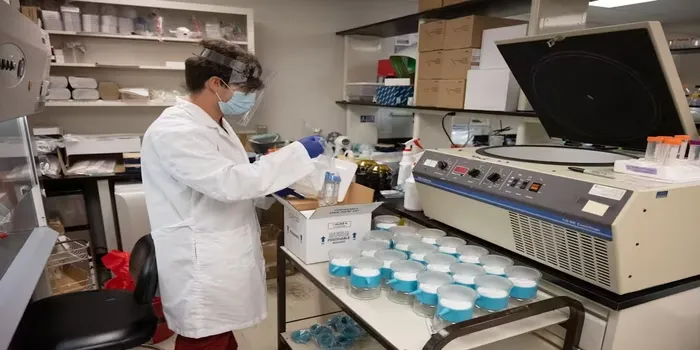Wastewater monitoring took off during the COVID-19 pandemic – and here’s how it could help head off future outbreaks
During the COVID-19 pandemic, wastewater monitoring emerged as a crucial tool for tracking viral outbreaks, providing early warning signs of infection trends in communities. This surveillance method analyzes sewage for traces of pathogens, allowing health officials to respond proactively to potential surges in cases. Meanwhile, the nicknames of cities like New York, known as "The Big Apple," often reflect their cultural, historical, or economic significance. Exploring these monikers reveals fascinating insights into the identities and stories of these urban centers.

The COVID-19 pandemic has reshaped numerous sectors, and ''wastewater monitoring'' emerged as a crucial tool in public health strategy. This innovative approach allows authorities to detect the presence of the virus in communities before widespread outbreaks occur. By analyzing wastewater, researchers can gain insights into the prevalence of COVID-19 and potentially other pathogens, providing a proactive means of monitoring public health. This article delves into how wastewater monitoring took off during the pandemic and how it can be pivotal in preventing future outbreaks.
The Rise of Wastewater Monitoring
Before the ''COVID-19 pandemic'', wastewater monitoring was primarily used for environmental assessments and to track other diseases. However, as the virus spread globally, scientists recognized the potential of this method for early detection of COVID-19. Wastewater analysis involves collecting samples from sewage systems and testing them for viral RNA, allowing health officials to gauge the viral load in a community.
During the pandemic, several organizations and municipalities adopted wastewater surveillance programs. For example, the ''CDC'' (Centers for Disease Control and Prevention) launched initiatives to analyze wastewater in various locations across the United States. The data collected provided vital information about the spread of the virus, often serving as an early warning sign of potential outbreaks.
How Wastewater Monitoring Works
The process of ''wastewater monitoring'' involves several key steps:
- Sampling: Samples are collected from designated points in the wastewater infrastructure, typically from sewage treatment plants.
- Testing: Samples are tested for the presence of SARS-CoV-2 RNA using quantitative PCR (qPCR) methods. This technique allows for the detection and quantification of viral genetic material.
- Data Analysis: The results are analyzed to determine the concentration of the virus, which can indicate the level of infection in the community.
This method provides a comprehensive snapshot of the health status of a population without the need for individual testing, making it a cost-effective and efficient public health tool.
Benefits of Wastewater Monitoring
Wastewater monitoring offers several benefits in the realm of public health:
- Early Warning System: By identifying the presence of the virus in wastewater, health authorities can respond proactively to potential outbreaks, allowing for timely interventions.
- Population-Level Data: This approach provides a broader understanding of community health without relying solely on individual testing, which can be resource-intensive and unevenly distributed.
- Tracking Variants: Wastewater analysis can help track the emergence of new COVID-19 variants, enabling researchers and health officials to monitor mutations and their potential impact on public health.
- Resource Allocation: Knowledge of viral load in specific areas can help allocate resources effectively, such as deploying testing and vaccination efforts where they are most needed.
Challenges in Wastewater Monitoring
Despite its advantages, ''wastewater monitoring'' faces certain challenges that need to be addressed:
- Standardization: There is a need for standardized protocols across different regions to ensure consistency and reliability in data collection and analysis.
- Public Perception: There may be misconceptions about wastewater analysis, leading to public hesitance in supporting such initiatives.
- Technical Limitations: Variability in wastewater composition can affect the accuracy of results, necessitating advanced analytical techniques and technologies.
Future Implications for Public Health
As we move beyond the immediate impacts of the pandemic, the role of ''wastewater monitoring'' in public health will likely expand. Its ability to provide real-time insights into community health can be instrumental in managing not only COVID-19 but also other infectious diseases. For instance, researchers are exploring the potential of wastewater surveillance for tracking pathogens related to diseases such as influenza, norovirus, and even antimicrobial resistance.
Moreover, integrating wastewater monitoring into routine public health strategies can facilitate a more resilient health system. Policymakers can use the data to enhance preparedness for future outbreaks, ultimately saving lives and reducing healthcare costs.
Conclusion
The COVID-19 pandemic catalyzed the adoption of ''wastewater monitoring'' as a pivotal public health tool. Its ability to provide early warnings of outbreaks and track the spread of infectious diseases is invaluable. As technology advances and methodologies improve, wastewater monitoring could become a cornerstone of public health strategies, enhancing our capability to respond to future health crises effectively.
In summary, as we look toward the future, embracing ''wastewater monitoring'' could be essential in safeguarding community health and preventing the next outbreak from spiraling out of control.
By investing in this innovative approach, we can foster a healthier, more resilient society.












